ORLEANS – The Pete Seeger photography rules were very simple, explained photographer John Economos. “I’d ask Pete, ‘Do you mind if I take your picture?’ And he’d answer, ‘As long as I don’t know about it.’ “
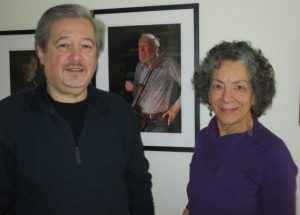
John Economos and Maxine Smith – The Econosmiths in front of one of their photos of the legendary Pete Seeger.
Pete Seeger, the legendary folk singer / activist, passed away at the age of 94 on January 27, 2014. Economos and his wife, Maxine Smith, make up the “Econosmith” photography team of Orleans that captured iconic later-year images of Seeger and many other American folk music heroes including Richie Havens and Judy Collins. Among their many credits are photos for albums for Seeger – “At 89” and “The Rivertown Kids.”
“Our goal is to capture the spirit, or the soul, of the person performing,” said Smith.
They are able to do so, according to some Cape people who have hired the Econosmiths, because they are so unobtrusive, and because they understand folk music.
“They are die-hard folkies,” said David Roth, a nationally-touring singer/songwriter who lives in Orleans. “They get it. They are part of the fabric of folk music.”
While the folk credentials of Economos and Smith are pure, Roth said their skill and their ability to disappear into the background is what makes them special. “Not only are they technically perfect, but they are artful and heartfelt,” said Roth.
When Roth hired them to photograph an event of his, “they were completely unobtrusive. I hardly knew they were there.”
Bob Weiser, a radio host at WOMR in Provincetown, said he has staged shows that the Econosmiths have photographed. “They are skillful at taking great pictures while making themselves as unobtrusive as possible.”
He added that they often donate their photos to the station’s fundraisers and for other causes. “They are kind and generous people,” said Weiser.
A Photographic Relationship
John Economos was the property manager in a building in Kingston, New York, where Maxine Smith had just relocated in 1992. One snowy day, Economos was outside cleaning off cars. “I love snow,” said Economos. “I figured I’d clean cars off. It beats sitting inside in the office. I just happened to be cleaning her car when she walked out.”
“I came out of the office and there was this cute guy cleaning off my car,” is the way Smith put it. “From then on, I began paying my rent in person.”
It was a casual friendship and then one day Economos saw Smith walking out of a camera store. He told her that he used to take some pictures and offered to show her his cameras sometime. Months later, she took him up on the offer, and, Economos said, “We talked until 1 in the morning.”
How They Developed
Economos was raised in Kingston, just outside of Woodstock. His father worked for IBM and was the president of a photography club. His grandfather had been a professional photographer. “I started taking pictures at 7,” he said.
He grew up loving the outdoors and wanting to be a forest ranger, “but then I found out how much forest rangers make,” he said. After high school, with his photography technical background, he found a job working for “five guys in a garage making semiconductors. When I left, there were 500 people working for the company,” said Economos.
He then spent 15 years working for IBM on semiconductors and contamination control. “The level of cleanliness required for semiconductors made an operating room look like a town dump,” he said.
During his last three years, he said, he moved into property management for IBM because he was looking for something different.
This move coincided with IBM downsizing, and Economos said he left after a couple of years.
He took a job managing a building in Kingston.
His future tenant, and future wife, Maxine Smith had been born in Brooklyn and moved to Poughkeepsie, New York when she was 7. While dance was her passion as a child, she had a Brownie Camera that she used for family photos.
Her earliest interest, she recalled, was working with deaf children. One summer, Smith’s sister and her sister’s best friend worked at a camp for handicapped individuals, and when Smith visited, she was moved. The next year, she worked there. She remembered working with one deaf young man who played the lead, Conrad Birdie, in the play “Bye Bye Birdie” and she remembers “the fun of that play,” said Smith.
She attended Syracuse University starting with a major in special education, but she switched and graduated with a degree in speech and communication.
After college, Smith moved to New York, worked in the fashion industry, and initially lived at the Martha Washington’s Women’s Hotel. “It was safe,” said Smith. The place was filled with many characters including “Ziegfeld Follies type of women,” she said.
She landed a new job at New York University, and acquired two graduate degrees – in deaf education, and in teaching English as a second language, said Smith. She found an apartment in Greenwich Village with a window n apartment facing Washington Square Park. “I bought a lamp and a high rise bed. I remember thinking, I’m in Greenwich Village, “ said Smith”
After receiving her graduate degrees, Smith moved to Virginia and taught deaf children until she was compelled to come back to New York to be a caregiver for family members. She did this for more than a decade.
When she moved to Kingston in 1992 to work as a disability work center counselor, Smith was ready for a fresh start.
Where Have All The Pictures Gone?
Economos and Smith each have their own personal connection to the folk music scene.
Smith said her father was a distributor for the now defunct Alpha Records. “One of my earliest memories was being at my grandparents house in Brooklyn and my father called. I was 6 years old. He put me on the phone and said I was going to hear a song before anyone else. It was ‘Mona Lisa” by Nat King Cole.”
She especially remembers being exposed to folk music. “My father always told me that Peter Paul and Mary put me through college,” said Smith.
And Economos said, “When I was a child, my mother’s favorite song was “Goodnight Irene” by The Weavers.” Pete Seeger, of course, was in The Weavers.
Smith said that the office for Seeger’s group, Hudson River Sloop Clearwater, was in in Poughkeepsie, where she grew up. She volunteered to work there in 1990.
They both love to tell the story of Seeger’s dedication to the environment and especially the Hudson River. “The Hudson was one of the most polluted rivers on Earth,” said Economos. “Pete and others built a replica of an old Hudson River sailing sloop and sailed it to raise money, and awareness. He founded an environmental music festival. When Pete Seeger called, people came.”
Originally, said Economos, as the boat traveled, concerts were put on to pay for boat. “Today they take kids and families out on the river to teach them about cleaning up the river and the environment. Music is still a major part of how they deliver the message and always do singalongs,” he said.
One of their event is the Great Hudson River Revival also known as the Clearwater Festival, which is the environmental/music festival.
The two, now a couple, decided to approach Seeger’s organization and volunteer their photography for the music festival. They called. They wrote. Nothing. Finally, Economos put together a CD of their photos and sent it to the Clearwater offices. They got a call, and photographed their first festival in 2005.
“We love music. The focus wasn’t the performers,” said Smith. “The idea was to tell the story of the whole weekend.”
They now get all-access – sound check, backstage, on stage, and green room. They get that access because of their unobtrusive ways and their discretion in which photos they use, they both said.
Economos, though, gives credit to Smith. “I carry all kinds of heavy duty equipment. At the end of the day, I am crippled from carrying 60 pounds around. She’s able to get shots because no one’s paying attention to her. I’m the diversion while she’s getting the shot. We both get the shots to satisfy the job. But if we pick the five best, four of the five will be hers,” he said.
They each said that they compliment each other.
“I don’t know how to explain exactly what they do differently,” said Weiser. “Some photographers stay in one place. Some move around constantly. John and Maxine are working together, and working differently, as a team.”
Economos said, “Often we get the same shot from different angles. I see angles, patterns, textures, not emotional stuff. She focuses on the emotional stuff.” They have each learned from the other, he said, adding he is much better at capturing emotion than he used to be.
“But Max can understand performing and music and can anticipate better than I can,” he said.
As for Seeger, Economos said, “I always felt that Pete tolerated me and liked Maxine.”
Turn, Turn, Turning Photos Into Good
“We are activist photographers,” said Economos. “But our goal is to always keep it fun. If it’s a business, it takes the fun out of it.”
“If I take your money, I have to shoot what you want me to shoot,” he explained. “We shoot it at no cost. It keeps it still at a hobby level.” Photos are for sale afterward, he said.
Often, their photography is donated to various causes, said Economos.
The Econosmiths have photographed musicians from Pete Seeger to local Cape Cod musicians. “If there is somebody we really like, we will approach them,” said Economos.
Seeger allowed Economos and Smith to photograph him, but he was always very clear about one thing, said Economos. “He hated being idolized. He’d say use your energy to change the world, not idolize me.”
— Brian Tarcy
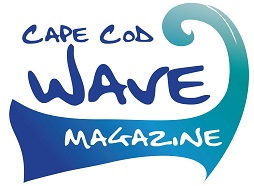

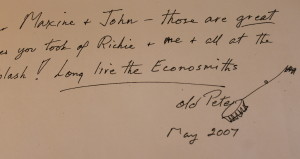
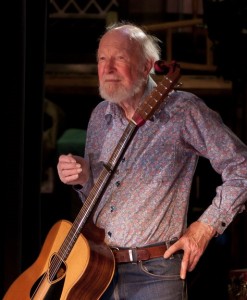
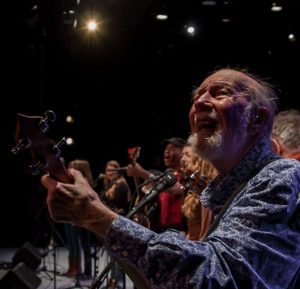
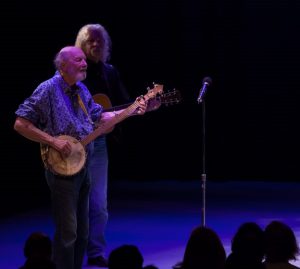





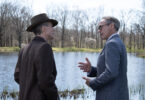














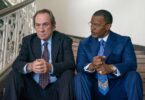



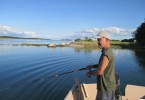


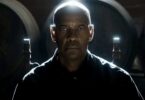
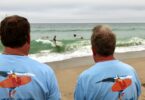

A good tale and an interesting read. Thanks!